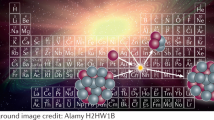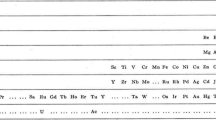Abstract
The elements in the periodic table are the building blocks used to form substances with different compositions. Nevertheless, it is the properties of substances that are decisive for their existence and practical applications. Searching for new class of materials with exotic properties has always been challenging because of the complexity of both the theoretical and the experimental approaches developed so far. Here, we propose that the three ubiquitous and paramount attributes of all existing matter charge (Q), spin (S) or rotational motion, and linear motion (K) can be used to account for the formation of different types of matter/materials and their properties that have been or will be known to us. The three attributes or original codes can produce six primary codes which can further produce another sixty codes. The physical meanings represented by each code are unlocked. The table consisting of the 60 codes is introduced as the table of properties of codes of matter. We demonstrate that these codes can be used as building blocks to form new properties and new materials. Many new types of quasiparticles and new classes of materials with exotic properties of Q, S and K are predicted. Their possible experimental realizations are proposed. The possible applications of the codes of matter in other fields such as elementary particles, photonics and chemistry are briefly discussed. We know that there should be more new materials and new electronic, spin and photonic states to be discovered, but we do not know what they are. The codes of matter clearly reveal to us how many and what they are and how easily we can recognize what they are. Experimental and theoretical exploration for new forms of matter, new quasiparticles, or new electronic and spin states, or new states of photon or properties of light, as well as macroscopic entities with exotic properties represented by the codes of matter, is imminent.








Similar content being viewed by others
References
Kim BJ, Koh H, Rotenberg E et al (2006) Distinct spinon and holon dispersions in photoemission spectral functions from one-dimensional SrCuO2. Nat Phys 2:397–401
Fu L, Kane CL (2008) Superconducting proximity effect and Majorana fermions at the surface of a topological insulator. Phys Rev Lett 100:096407
Wen XG, Witten E (1985) Electric and magnetic charges in superstring models. Nucl Phys B 261:651–677
Castelnovo C, Moessner R, Sondhi SL (2008) Magnetic monopoles in spin ice. Nature 451:42–45
Ray MW, Ruokokoski E, Kandel S et al (2014) Observation of Dirac monopoles in a synthetic magnetic field. Nature 505:657–660
Ali MN, Xiong J, Flynn S et al (2014) Large, non-saturating magneto resistance in WTe2. Nature 514:205
Tsidilkovski IM (1996) Electron spectrum of gapless semiconductors. Springer, New York
Wang XL, Dou SX, Zhang C (2010) Zero gap materials for future spintronics, electronics and optics. NPG Asia Mater 2:31–38
Leuken HV, de Groot RA (1995) Half-metallic antiferromagnets. Phys Rev Lett 74:1171
Kane CL, Mele EJ (2005) Z2 topological order and the quantum spin Hall effect. Phys Rev Lett 95:146802
Konig M, Wiedmann S, Brune C et al (2007) Quantum spin hall insulator state in HgTe quantum wells. Science 318:766–770
Fu L, Kane CL (2007) Topological insulators with inversion symmetry. Phys Rev B 76:045302
Wang XL (2008) Proposal for a new class of materials: spin gapless semiconductors. Phys Rev Lett 100:156404
Andreev AF (1964) Thermal conductivity of the intermediate state of superconductors. Sov Phys JETP 19:1228
Byers JM, Flatte ME (1995) Probing spatial correlations with nanoscale two-contact tunnelling. Phys Rev Lett 74:306
Rashba EI (1960) Properties of semiconductors with an extremum loop. 1. Cyclotron and combinational resonance in a magnetic field perpendicular to the plane of the loop. Sov Phys Solid State 2:1109
Bychkov YA, Rashba EI (1984) Oscillatory effects and the magnetic susceptibility of carriers in inversion layers. J Phys C 17:6039
Oerter R (2006) The theory of almost everything: the standard model, the unsung triumph of modern physics. Pearson Plc, London
Braibant S, Giacomelli G, Spurio M (2012) Particles and fundamental interactions: an introduction to particle physics, 2nd edn. Springer, New York
Khanikaev AB, Mousavi SH, Tse WK et al (2013) Photonic topological insulators. Nat Mater 12:233–239
Chai Y, Guo T, Jim CM et al (1991) Fullerenes with metals inside. J Phys Chem 95:7564–7568
Wang J, Neaton JB, Zheng H et al (2003) Epitaxial BiFeO3 multiferroic thin film heterostructures. Science 299:1719–1722
Weyl H (1929) Electron and gravitation. I Z Phys 56:330
Wan XG, Turner AM, Vishwanath A et al (2011) Topological semimetal and Fermi-arc surface states in the electronic structure of pyrochlore iridates. Phys Rev B 83:205101
Acknowledgments
This work was supported by the Australian Research Council Future Fellowship (Professorial) Program (FT130100778). The author is very thankful to Dr. Tania Silver for editing the manuscript.
Author information
Authors and Affiliations
Corresponding author
Electronic supplementary material
Below is the link to the electronic supplementary material.
About this article
Cite this article
Wang, XL. The codes of matter and their applications. Sci. Bull. 60, 1661–1673 (2015). https://doi.org/10.1007/s11434-015-0901-1
Received:
Accepted:
Published:
Issue Date:
DOI: https://doi.org/10.1007/s11434-015-0901-1




